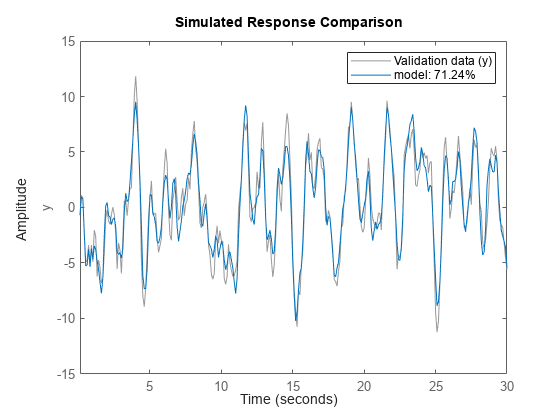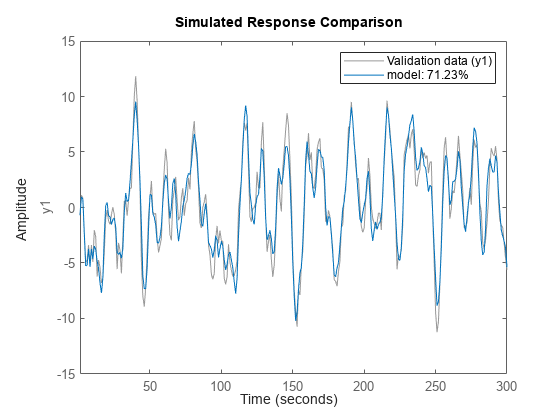arxRegul
Determine regularization constants for ARX model estimation
Syntax
Description
Calculate Regularization Constants
[
returns the regularization constants used for ARX model estimation, using the
data contained in the variables of timetable lambda,R]
= arxRegul(tt,orders)tt. Use the
regularization constants in arxOptions to configure the
regularization options for ARX model estimation.
The software uses the first Nu variables as inputs and the
next Ny variables as outputs, where Nu and
Ny are determined from the dimensions of
nb and na in the
orders argument, respectively.
To select specific input and output channels from tt, use
name-value syntax to set 'InputName' and
'OutputName' to the corresponding timetable variable
names.
[
uses the time-domain or frequency-domain data in the data object
lambda,R] = arxRegul(data,orders)data. Use this syntax especially when you want to
estimate a model using frequency-domain or frequency-response data, or when you
want to take advantage of the additional information, such as data sample time
or experiment labeling, that data objects provide.
Specify Additional Options
[
specifies model structure attributes, such as noise integrator and input delay,
using one or more name-value arguments. You can use this syntax with any of the
previous input-argument combinations.lambda,R]
= arxRegul(___,Name,Value)
Examples
Input Arguments
Name-Value Arguments
Output Arguments
Algorithms
Without regularization, the ARX model parameters vector θ is estimated by solving the normal equation
where J is the regressor matrix and y is the measured output. Therefore,
Using regularization adds the regularization term
where λ and R are the regularization constants. For more information on the regularization
constants, see arxOptions.
References
[1] T. Chen, H. Ohlsson, and L. Ljung. “On the Estimation of Transfer Functions, Regularizations and Gaussian Processes - Revisited”, Automatica, Volume 48, August 2012.
Version History
Introduced in R2013b

